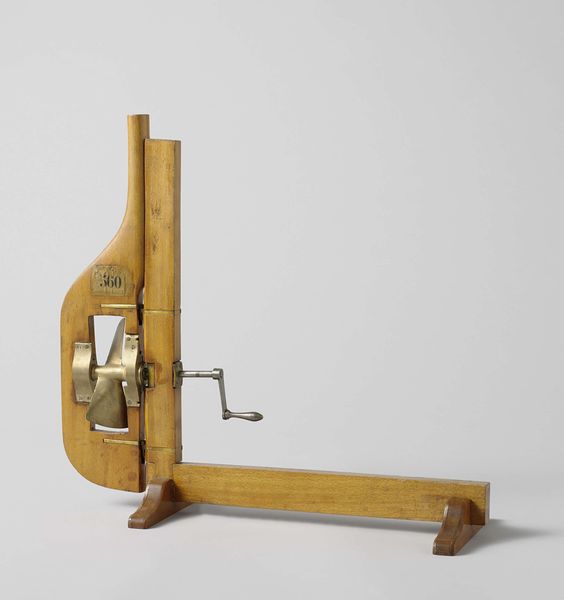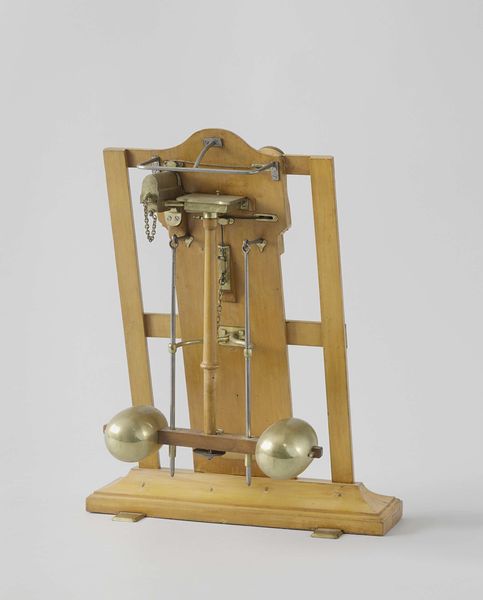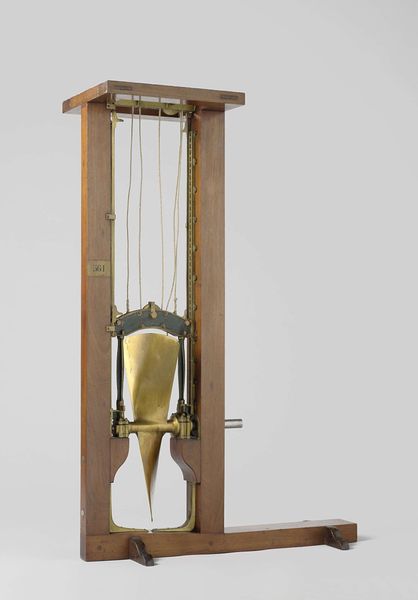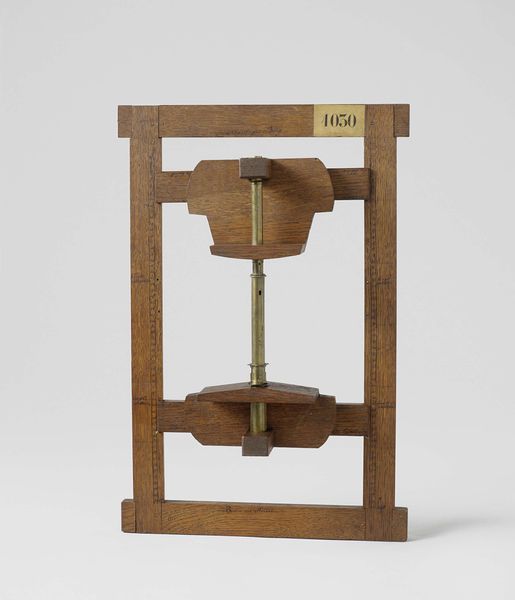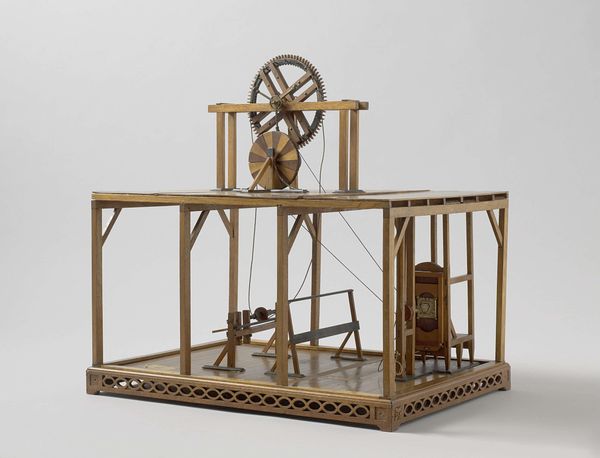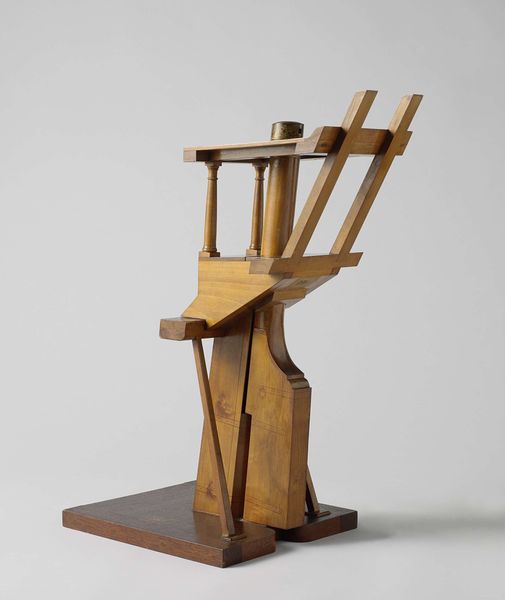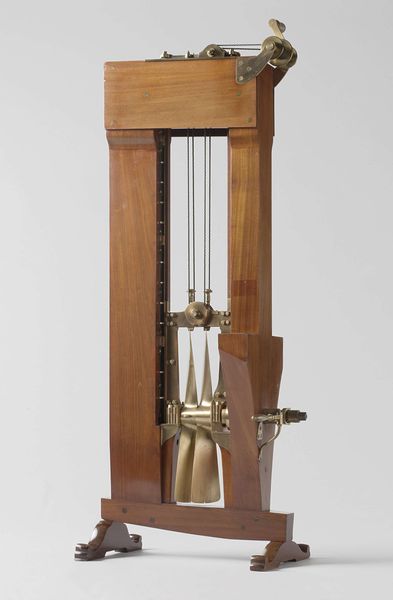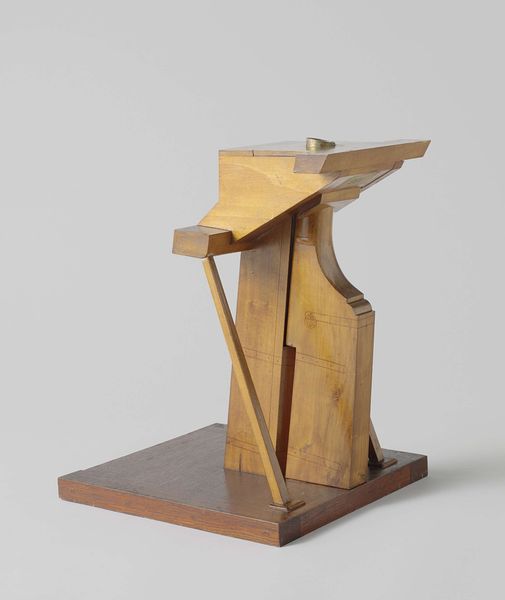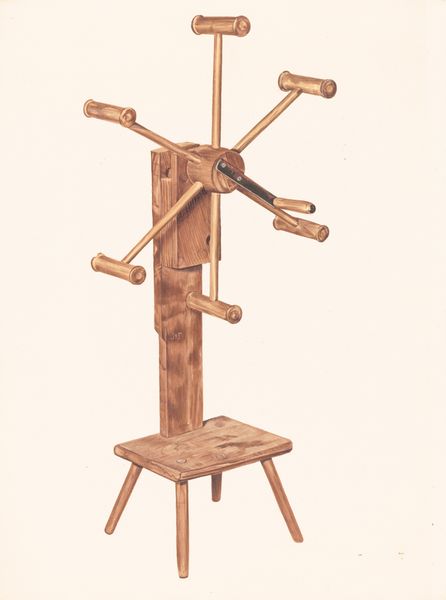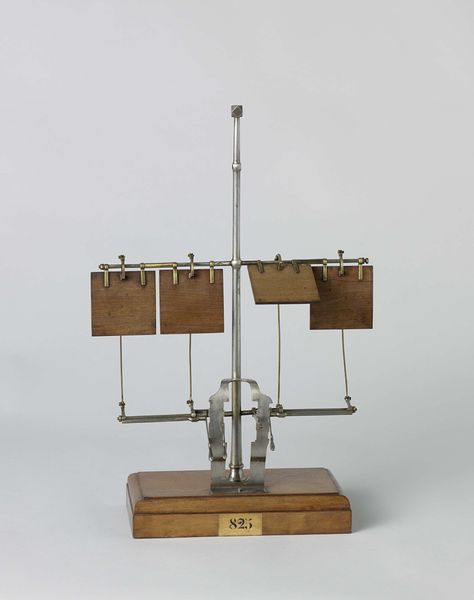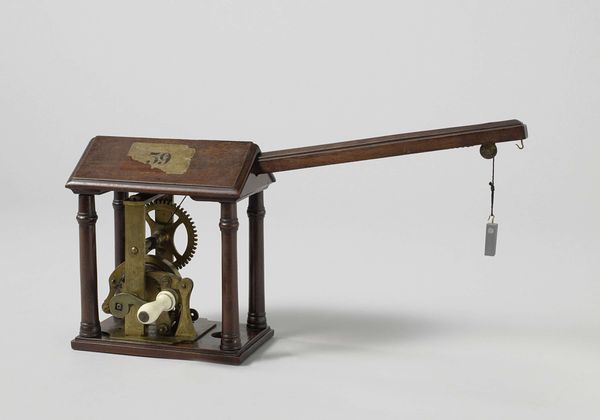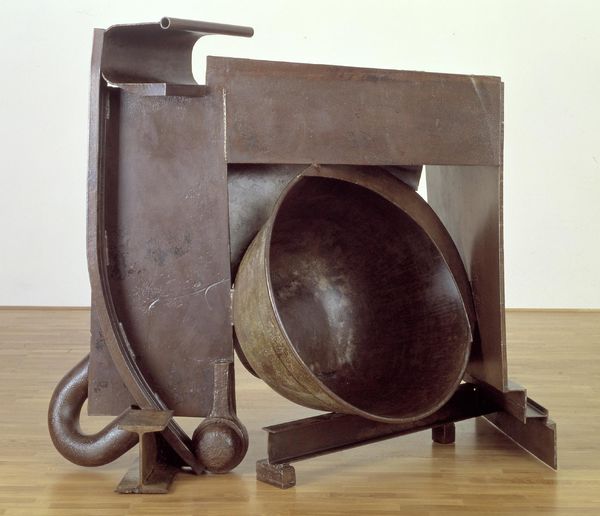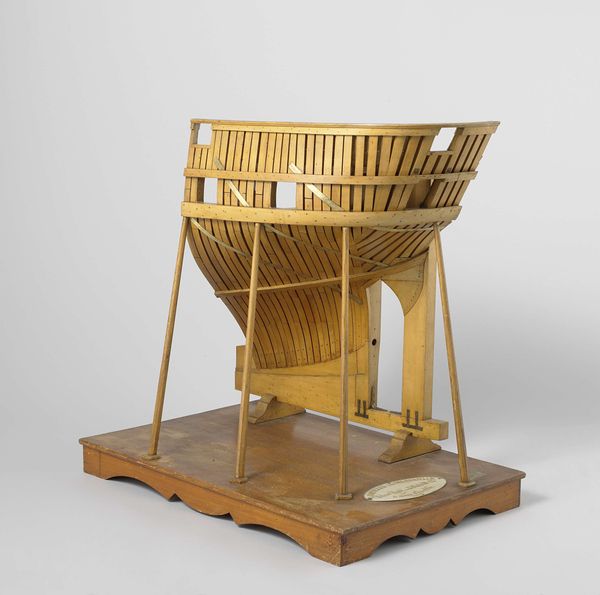
Dimensions: height 80.5 cm, width 60.2 cm, depth 25.8 cm
Copyright: Rijks Museum: Open Domain
This is H. Huijgens’s scale model of screw-propeller lifting gear, and it’s made primarily of wood, with metal and rope elements. What we see is a demonstration piece, a teaching aid. The bright wood is carefully planed and assembled, evidence of someone showing off their cabinetmaking skills. But it’s also more than that. The piece puts wood, a naturally buoyant material, into dynamic tension with metal and rope, which are associated with heavy industry and seafaring. It also speaks to the huge transformations in labor and technology in the nineteenth century, when ships evolved from sail power to steam. The piece serves as a reminder of the crucial role that skilled labor plays in the process of innovation. It prompts us to consider the relationship between the hand-made and the machine-made, and the many points of contact between them. Even in an age of mass production, we should remember that someone, somewhere, had to figure out how things work, and how to make them better.
Comments
rijksmuseum about 2 years ago
⋮
During favourable weather conditions, early steamships switched back to sail. The problem of screw propellers acting as brakes when not in use was solved by raising the propeller into the ship, utilizing the kind of lifting gear represented by this model. It was presented to the Royal Netherlands Navy in 1856 by H. Huijgens, who had seen a similar piece of equipment on the British ship HMS Duke of Wellington.
Join the conversation
Join millions of artists and users on Artera today and experience the ultimate creative platform.

